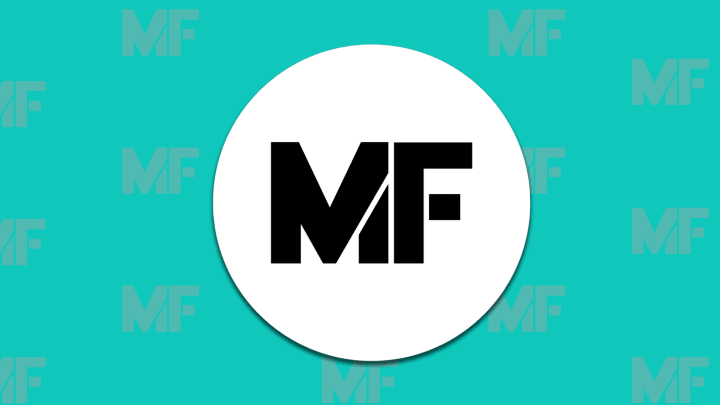Last week we had seven cow tales, but here's one that can't be told in just a simple paragraph. The story of the Masai village of Enoosaen and their gift of cattle is a story you won't forget.
The Masai people (also spelled Maasai) live in Kenya and Tanzania. They are semi-nomadic and require large swathes of territory to graze their cattle. Livestock, mainly cattle, is the lifeblood of the tribe. A man who has many cattle and many children is a rich man; more of one and few of the other spells trouble. Cows provide their nutrition: milk and cheese, blood, and occasionally meat. More often, sheep and goats are used for meat and cows are saved for milk and calves. Cows are used as an exchange medium. A man will trade cattle for a bride, and the number of cows given is a symbol of how wealthy he is and how much he wants to impress his in-laws. It may be the largest purchase of this life. Image by Flickr user ddepauw1.


Naiyomah told the story from his perspective as a witness and informed student. The villagers were horrified. They had trouble understanding how buildings were tall enough to cause death if one jumped from them, but they understood what 3,000 dead meant -that would be most of their village. The entire tribe anguished over the tragedy. They felt they had to do something to help the United States in their time of need. Naiyomah offered one of his cows and asked the elder to bless it. The elders responded by also donating cows as gifts to America.
"The cow is almost the center of life for us," said Mr. Naiyomah. "It's sacred. It's more than property. You give it a name. You talk to it. You perform rituals with it. I don't know if you have any sacred food in America, something that has a supernatural feel as you eat it. That's the cow for us."
The gift was meant to help Americans through their time of sorrow. Image above by Flickr user deepchi1.

Families donated 14 head of cattle to present to the United States. Naiyomah contacted the deputy chief of mission of the United States Embassy in Nairobi, William Brancick, to present the gift. Brancick flew to western Kenya, then drove another two hours to reach Enoosaen for the gift ceremony in 2002. He thanked the people of the village, but explained that the logistics of transporting the cattle would be prohibitively expensive. The cattle stayed in the village awaiting a decision on what the Americans would do with them. See video footage from the day of ceremony.

By 2006, the American herd numbered 21 head. Michael E. Ranneberger, the new US ambassador to Kenya, arrived at Enoosaen to inspect the herd. He announced the plan: the cattle would stay in Kenya, and their offspring would be sold to provide educational opportunities for Masai children. The Americans kicked off the program by providing 14 high school scholarships for village children. But how to identify which cows are American? The Masai mark their cattle with a notch in the ear. Each owner has a distinctive notch, so the US cattle had to have their own mark. Ambassador Ranneberger was asked to select a mark for the American cows. After some thought, he decided on two simple rectangles, which symbolize the Twin Towers of the World Trade Center. Image by Guillaume Bonn for The New York Times.

Naiyomah was contacted by author Carmen Agra Deedy to collaborate on a children's book about the Masai's gift of cattle. The result is 14 Cows for America. The picture book, illustrated by Thomas Gonzalez, was released in 2009 and is now a best seller.

The experience has changed life for Wilson Kimeli Naiyomah. He completed his MS in Biological Sciences at Stanford, and has switched gears from medicine to diplomacy. He is now a Rotary World Peace Fellow and is studying at the Rotary Center for International Studies at the University of Queensland in Brisbane, Australia. His goal is to become "a peacemaker", although he is plenty busy doing other things as well. Image by Rotary Images/Alyce Henson.

